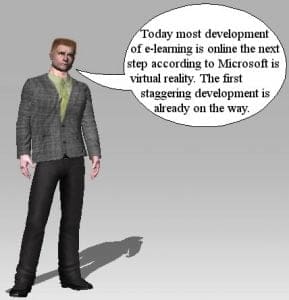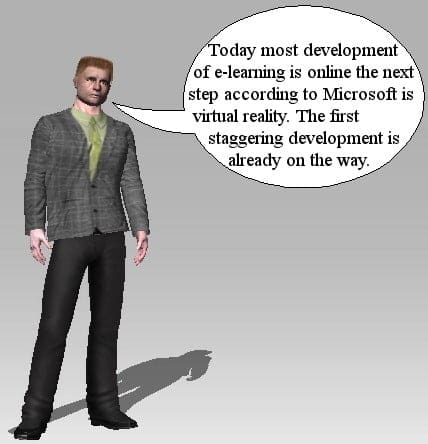 ”In 20 years, we’re going to see an impact equal
”In 20 years, we’re going to see an impact equal![]() to the printing press. This time we’ll see a global, diverse, educated workforce deliver on dependable innovation, shared vision, and collaborative creativity.”
to the printing press. This time we’ll see a global, diverse, educated workforce deliver on dependable innovation, shared vision, and collaborative creativity.”
Randy Hinrich, former Research Manager at Microsoft
The prerequisites to that this will become a reality are to deliver knowledge at the right time, at the right place, with the right method, with the right equipment, to the right person. Flexibility and individualisation is keywords for this form of learning and a great part takes place in front of the computer. This is the basic foundation of Microsoft’s vision for the future learning. However, such visions have often been declared at times of great technological innovations.
”I believe that the motion picture is destined to revolutionize our educational system and that in a few years it will supplant largely, if not entirely, the use of textbooks.”
Thomas Edison (1913)
Edison is only one of many that has predicted the fall of traditional education. Nevertheless, after the breakthrough of the printing press in the middle of the 19th Century technological innovations only have been a complement to traditional education. What then makes the information technology equally revolutionary as the effects that the printing press produced? The keywords are interactivity and the possibilities of individualisation.
From this background Bill Gates introduces Microsoft’s vision for the future learning. When a student enters learning system several automatic integrated processes begin from this individual’s personal preferences like learning style, personal activity selection, multimedia preferences, demand of equipment and content from a personal library with e-books and interactive exercises etc.
Most of the school work takes place in different projects outside the class room where the virtual laboratory is the common meeting place for these projects. BMW’s research and development project with the 3-series could here work as a model. For the first time they have constructed a car totally virtually with computer simulations without any other testing before starting producing it in a large scale.
One of Bill Gates most cited statements are that Microsoft does not produce software but standards. However, nobody will set the standard for education and learning in the future, but Gates has many interesting points. Today most development of e-learning is online the next step according to Microsoft is virtual reality. The first staggering development is already on the way. For more information about Bill Gates ideas look at the video below.
[ted id=1739 lang=en]
Written by
LarsGöran Boström©
Opens in a new tab



